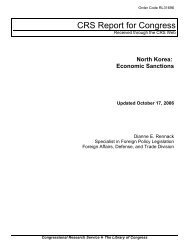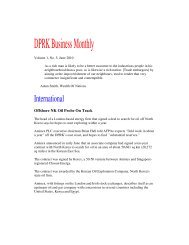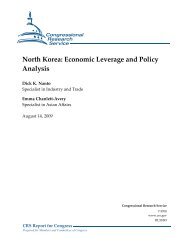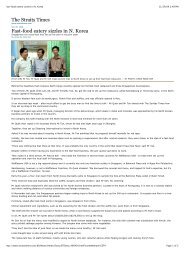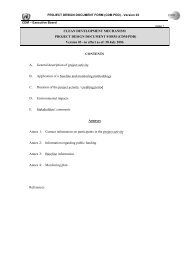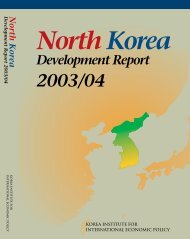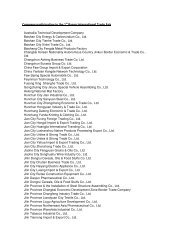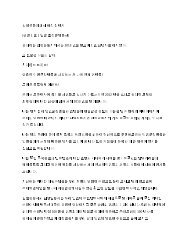North Korean Policy Elites - Defense Technical Information Center
North Korean Policy Elites - Defense Technical Information Center
North Korean Policy Elites - Defense Technical Information Center
You also want an ePaper? Increase the reach of your titles
YUMPU automatically turns print PDFs into web optimized ePapers that Google loves.
A. INTRODUCTION<br />
By definition, a totalitarian regime is characterized by the isolation of power and a highly<br />
personalized leadership. Authority is not found in formalized institutions adhering to laws. On<br />
the contrary, it is found in an opaque set of rules that dictate the relationship between members<br />
of the elite and among the governing bureaucracies, all wrapped in a mythology, which enforces<br />
a hierarchy within the system and the bond between the leader and the privileged class.<br />
Maintaining this order is critical. The operational code of such regimes is dedicated to the<br />
preservation of order, with all other considerations of policy being subordinate to this aim.<br />
<strong>North</strong> Korea is one of the last surviving totalitarian regimes. While it shares many of the<br />
characteristics of other such regimes, with its indisputable ruler (Suryong) and brand of<br />
mythology and hero worship (chuche ideology), in many ways, it is unique. Kim Il-sung’s death<br />
in July 1994 paved the way for the only hereditary succession in a communist system. In<br />
addition, the model (based on the Soviet experience) through which outsiders understood the<br />
leadership dynamics of totalitarian systems was violated. Because of the need to lay the<br />
foundation for the dynastic transfer of power, the <strong>North</strong> <strong>Korean</strong> ruling structure by the 1970s<br />
gave way to the creation of a system within a system with Kim Chong-il at the center. Informal<br />
levers replaced formal channels of authority and control. In 1998, this informal leadership was<br />
sanctioned by a new constitution, which blurred the authority of the ruling apparatus and its<br />
connection to the Suryong.<br />
Today, there is much speculation surrounding the viability of the Kim Chong-il regime.<br />
As the Dear Leader sought to ensure the hereditary succession, did he also create fault lines and<br />
structural instability within the system? In order to answer this question, this paper will address<br />
the issues of factionalism and sources and channels of information within the <strong>North</strong> <strong>Korean</strong> elite.<br />
These two factors can in many respects be used as diagnostic tools to understand system<br />
dynamics and the vulnerability of the regime to outside stimuli, such as initiatives from the<br />
United States.<br />
After a discussion of the unique characteristics of the <strong>North</strong> <strong>Korean</strong> system, this paper<br />
will focus on the system dynamics under Kim Chong-il. Special attention will be paid to the fault<br />
lines and potential vulnerabilities. The existence of factions within the leadership will be studied.<br />
Are these factions tied to policy lines, patronage systems, or are they loosely based on common<br />
II-1



